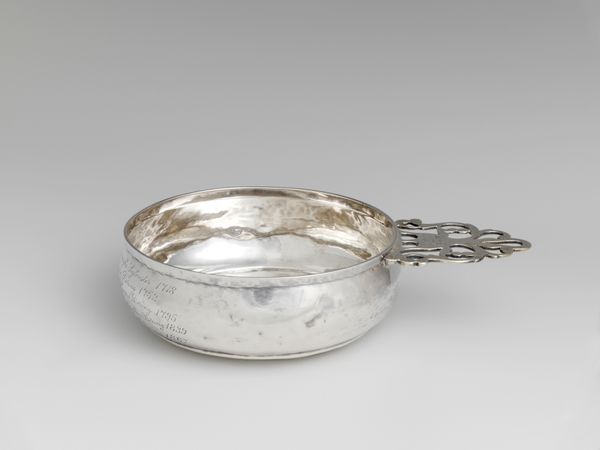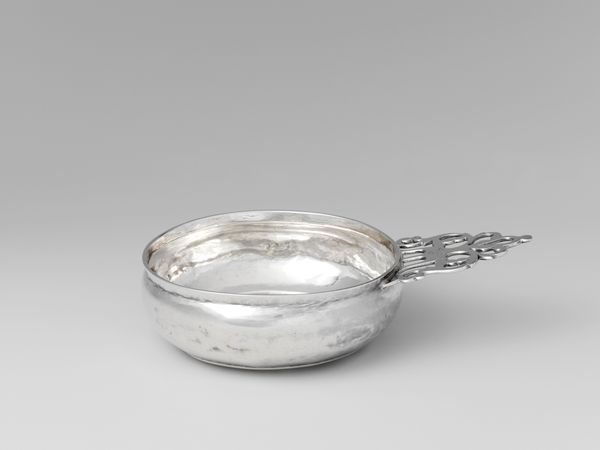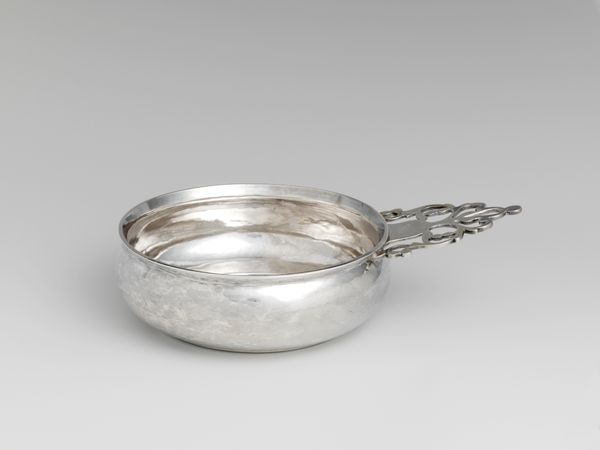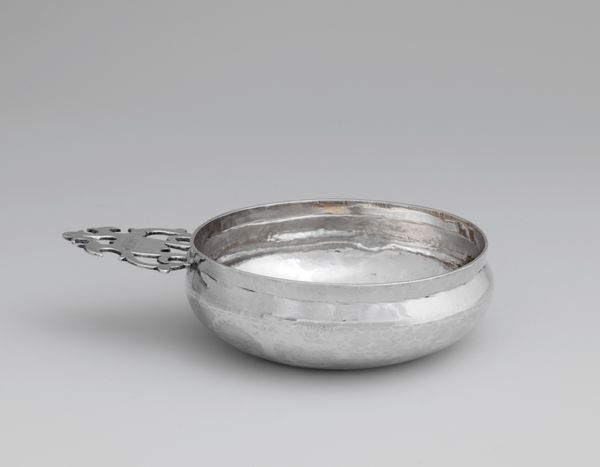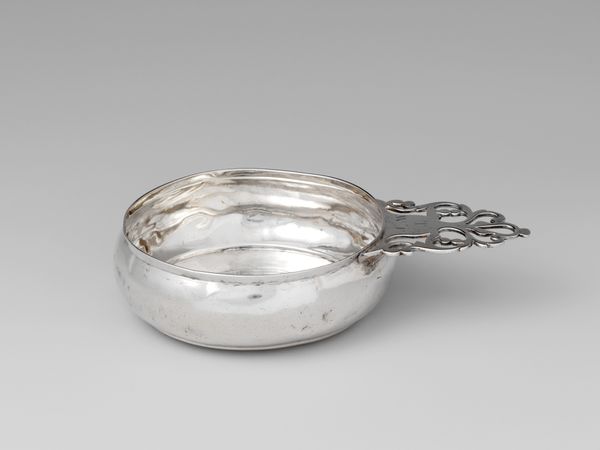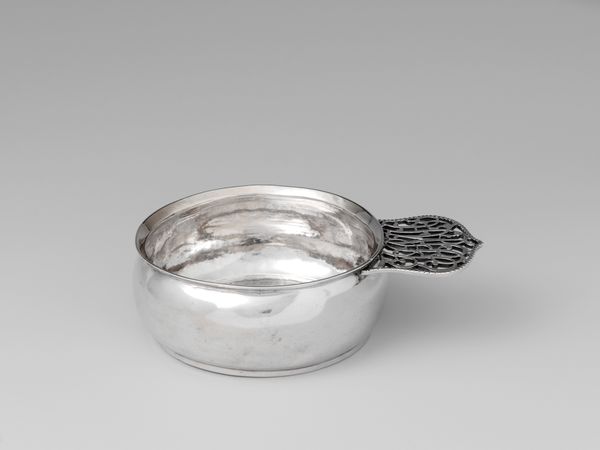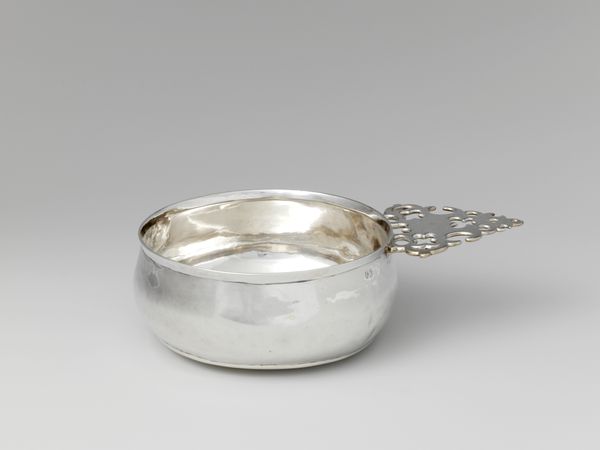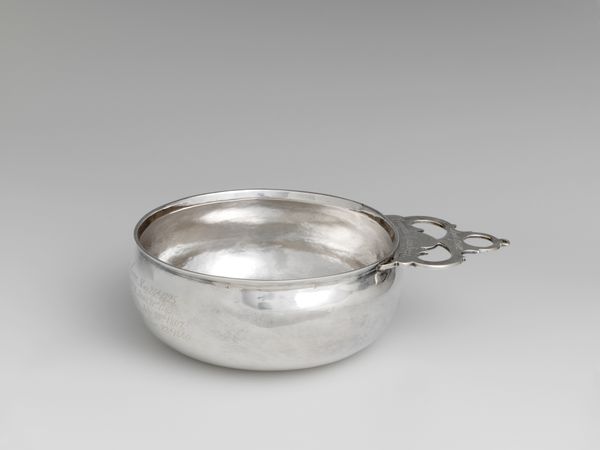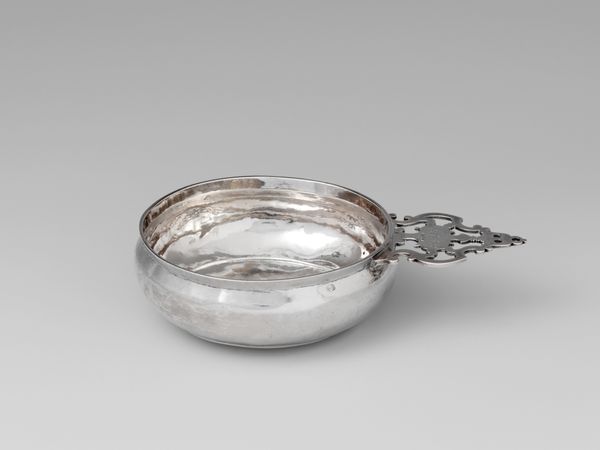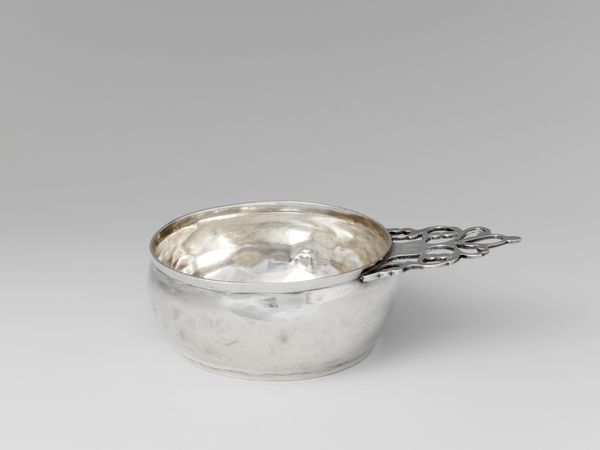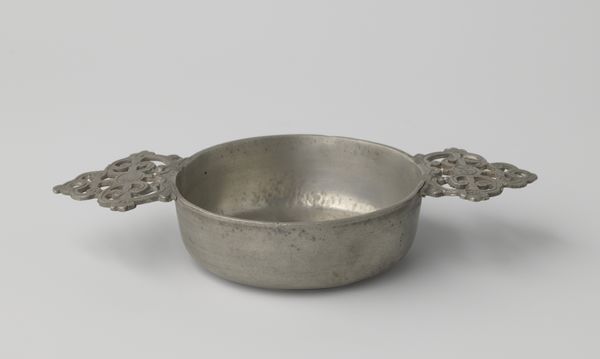
silver, metal
#
silver
#
metal
#
decorative-art
Dimensions: Overall: 2 5/16 x 8 3/8 in. (5.9 x 21.3 cm); 7 oz. 8 dwt. (230.5 g) Body: Diam. 5 1/2 in. (14 cm) Lip: Diam. 5 5/8 in. (14.3 cm)
Copyright: Public Domain
This silver porringer was crafted by Ebenezer Moulton in the late 18th or early 19th century. Note the handle, adorned with stylized motifs resembling leaves or vines. These are not mere decoration; they speak to a deeper connection between humanity and the natural world. Such botanical symbols have ancient roots, appearing in diverse cultures from classical Greece to the Renaissance. Consider the laurel wreath, a symbol of victory and achievement, or the vine, often associated with fertility and abundance. These symbols carry emotional weight, engaging viewers on a subconscious level, tapping into primal associations with growth, life, and nourishment. The motifs on this porringer, while seemingly simple, participate in this long and complex history. The stylized leaves evoke a sense of growth and vitality, perhaps reflecting a desire for the well-being and prosperity of the child who used it. It's a reminder of how even the most mundane objects can be imbued with powerful symbols, connecting us to a shared cultural memory that transcends time and place.
Comments
No comments
Be the first to comment and join the conversation on the ultimate creative platform.
